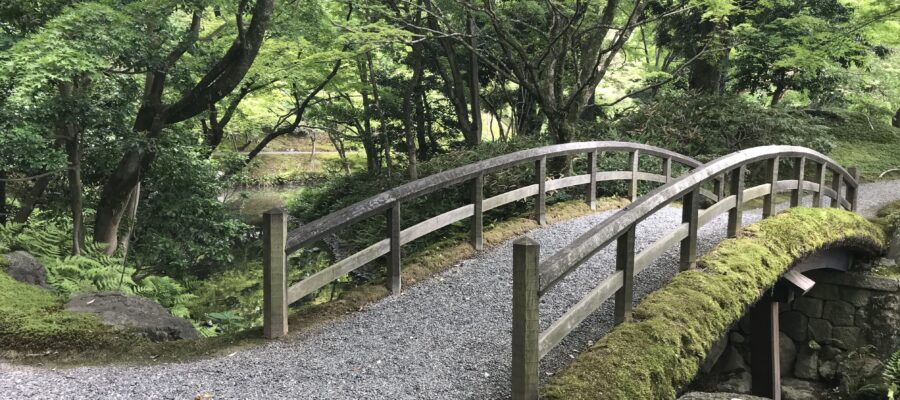今も皇族の宿泊に使用される大宮御所
皇位を退かれた天皇が住まわれる御所を仙洞御所といいます。今回訪問したのは京都御苑の中にある、後水尾上皇の御所として江戸時代初期に完成した場所です。既に御殿などはなく、隣接する大宮御所(皇太后の御所)が現在に伝わっています。現在も、天皇皇后両陛下や上皇上皇后両陛下が京都に来られた際に、ご宿舎として使用されています。
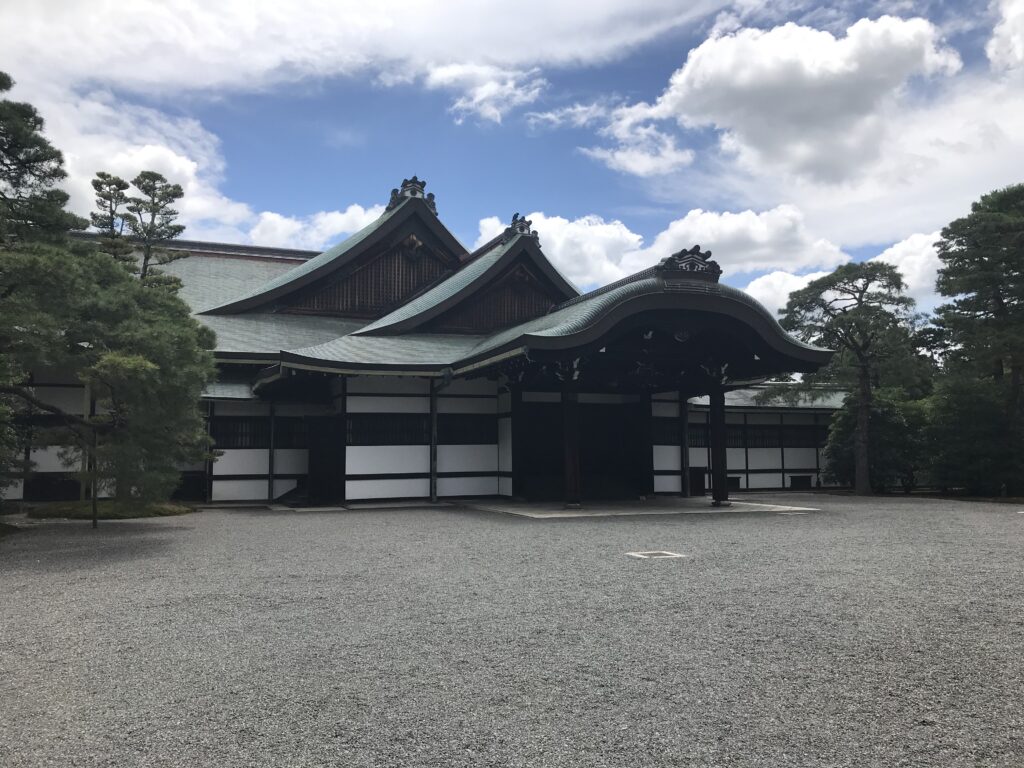
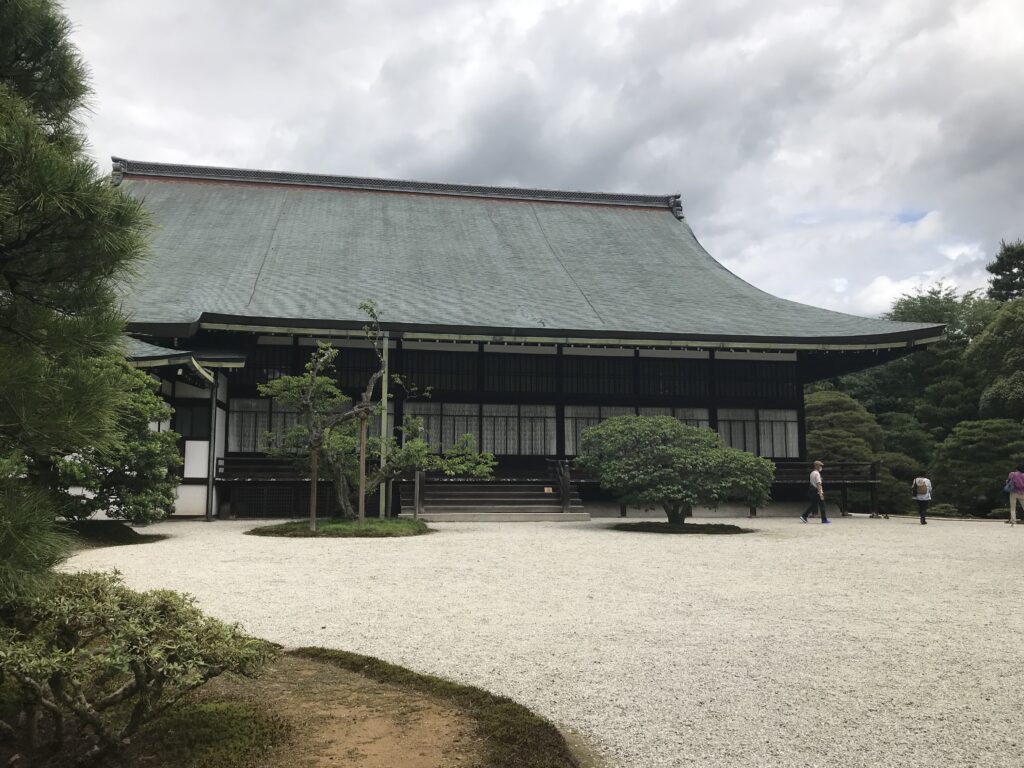
緑一色の世界
御常御殿から仙洞御所の庭園内に入ると、鬱蒼とした緑に囲まれた北池が目の前に現れます。この世界を表現すると、緑、緑、そして緑。初夏に訪れたことも影響していますが、京都市街の真ん中にて、木々の緑しか見えない世界にいるのは不思議な感じがします。案内の方に連れられて、時計回りで回遊します。
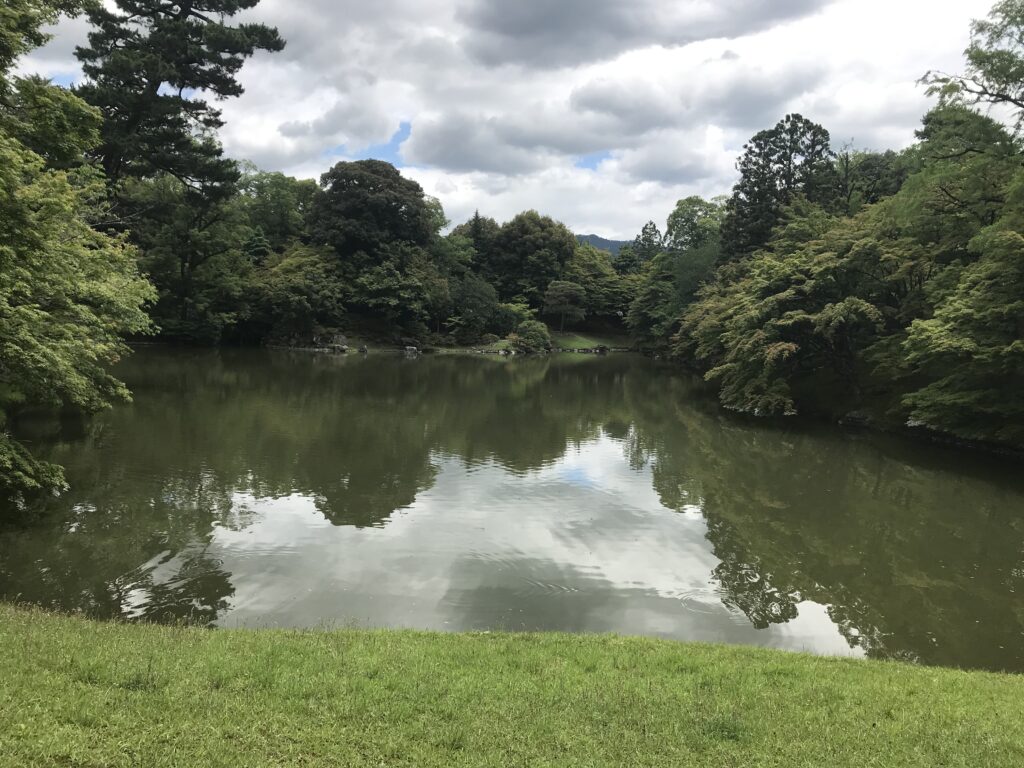
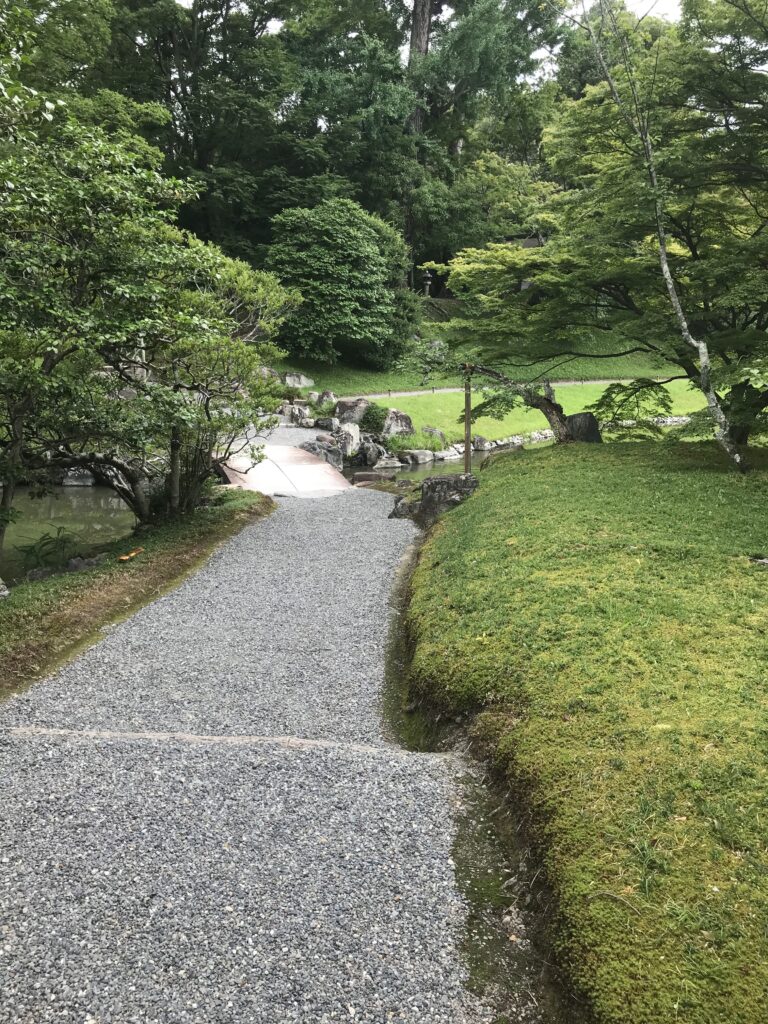
少し歩くと池の水面に対岸の景色が反射しています。対岸の真ん中に見えるのが紅葉橋で紅葉の季節には赤や朱入りの葉を付けた木々に飾られるそうです。今は全て青紅葉に覆われて緑一色です。
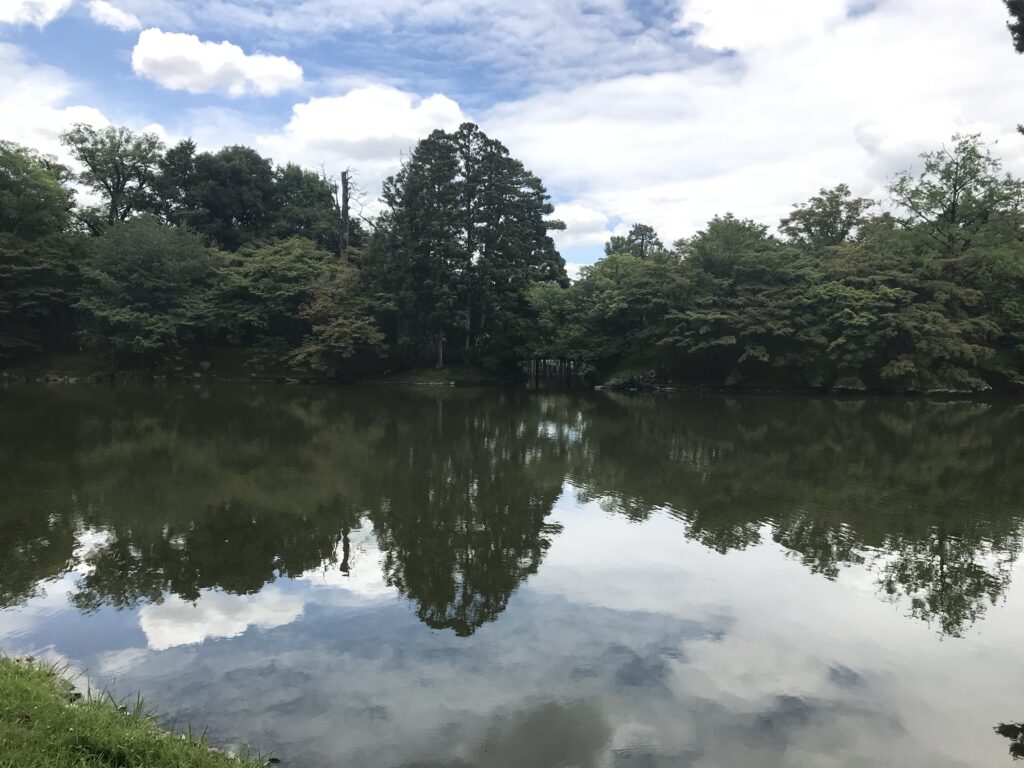
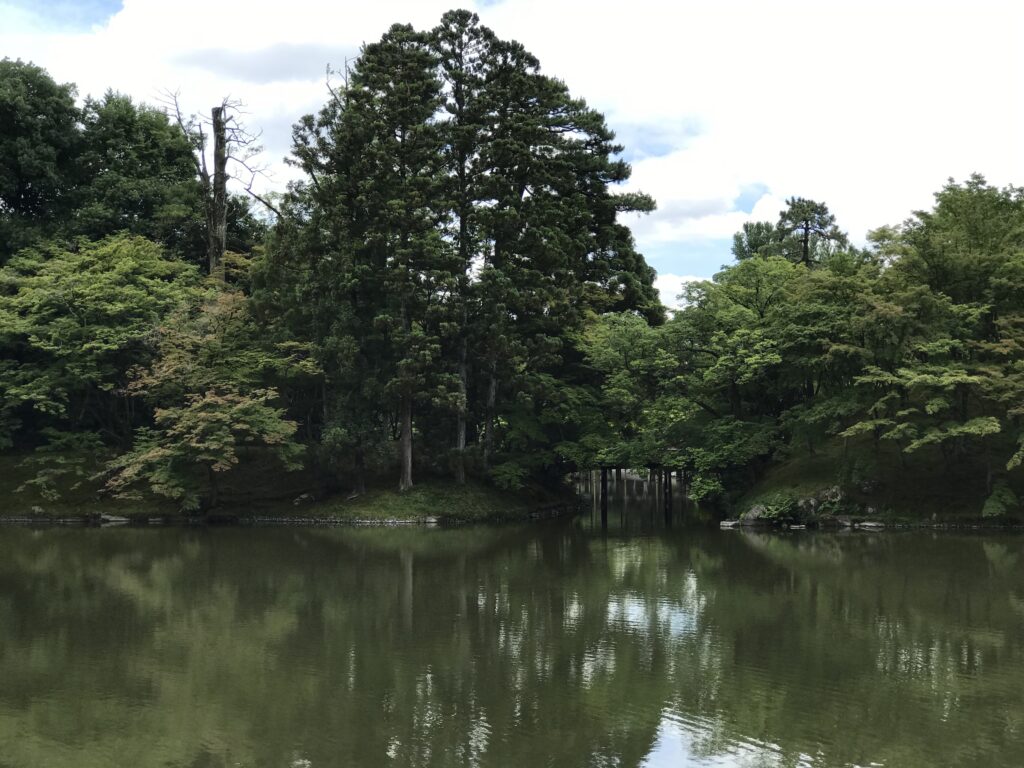
個性的な橋を渡って行く
途中、いくつもの石橋や土橋を渡って歩きます。それぞれの橋が個性的で、緑一色の中、次々と姿を変える庭園の姿に、飽きることなく回遊を楽しめます。対岸から見た紅葉橋を渡る前に、鷺の森と呼ばれる樹木の茂みを通ります。ここは地面も濃い緑色の苔に覆われていて、緑の世界が一層深まっていく世界です。
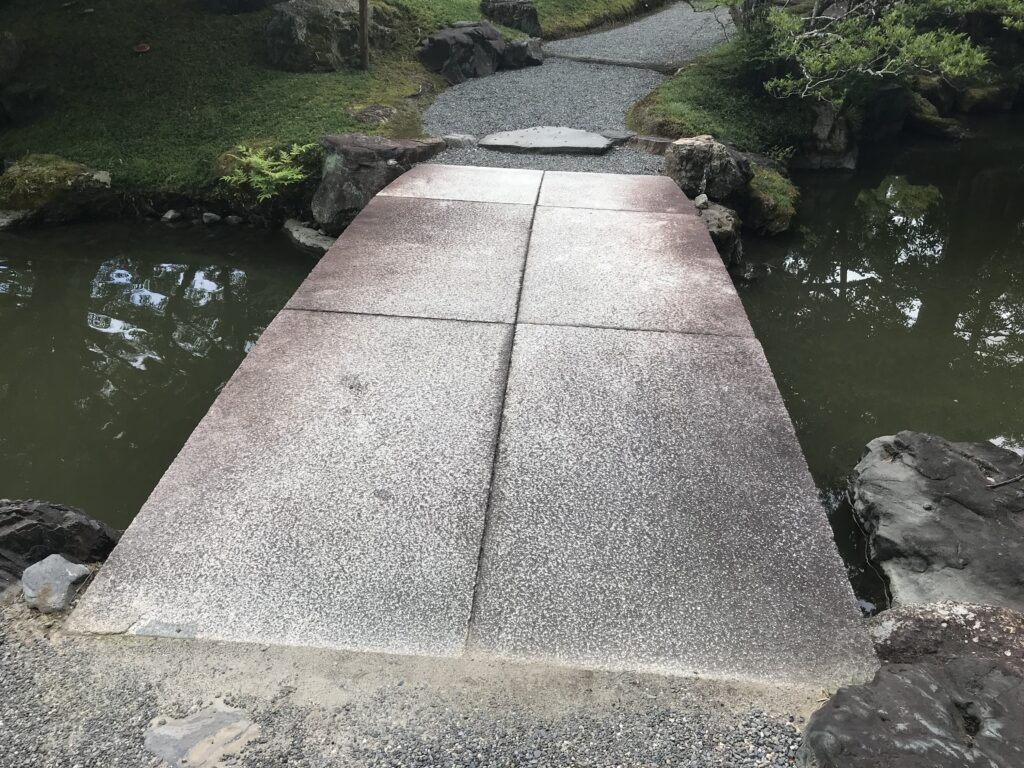
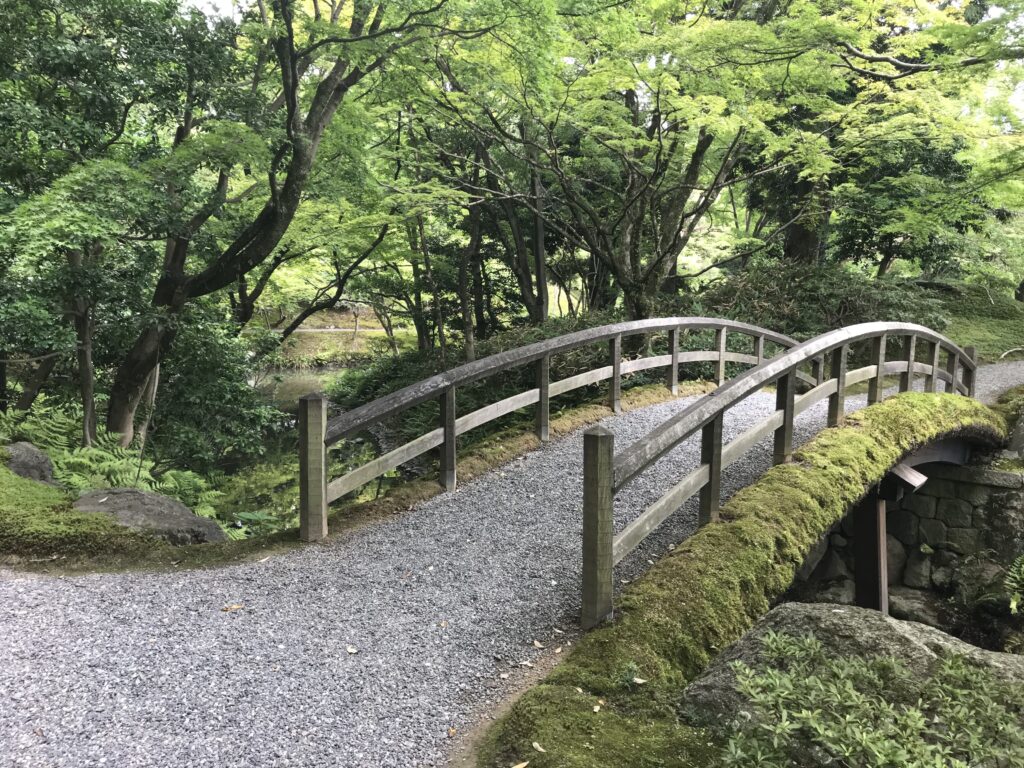
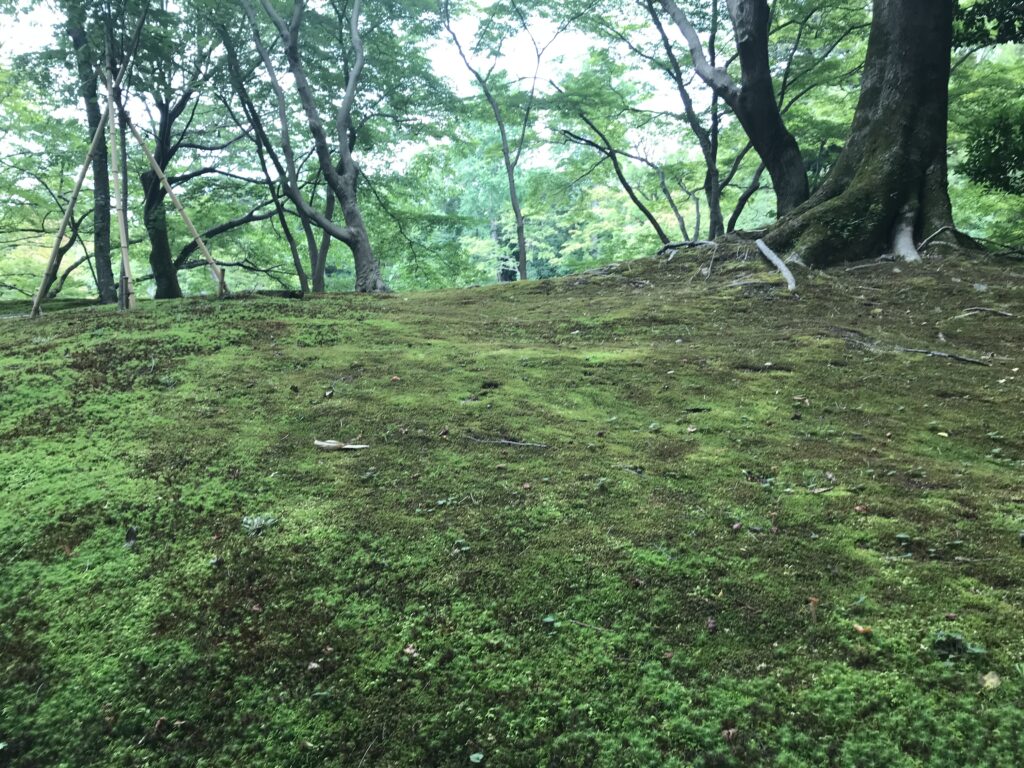
北池のそばには、明治時代に入ってから近衛家から献上された茶室、又新亭(ゆうしんてい)が経っています。茅葺と杮葺の屋根が組み合わさったデザインです。亭の外側には外腰掛もあります。ここで休憩しながら、お茶でも飲みたくなってきました。(つづく)
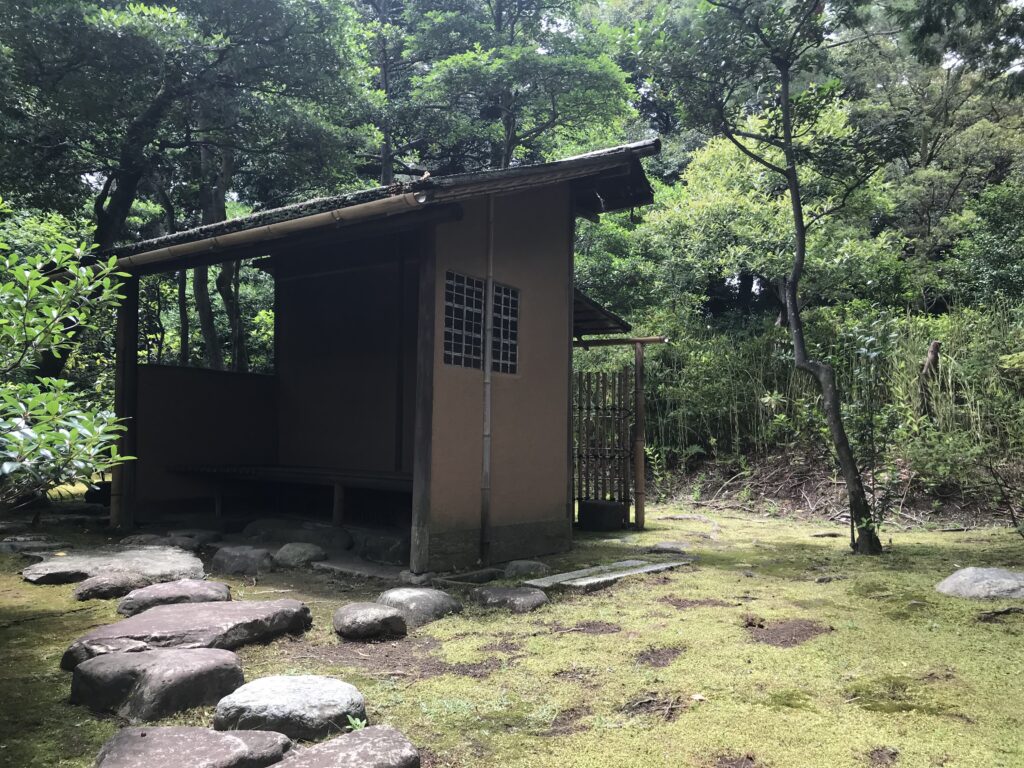
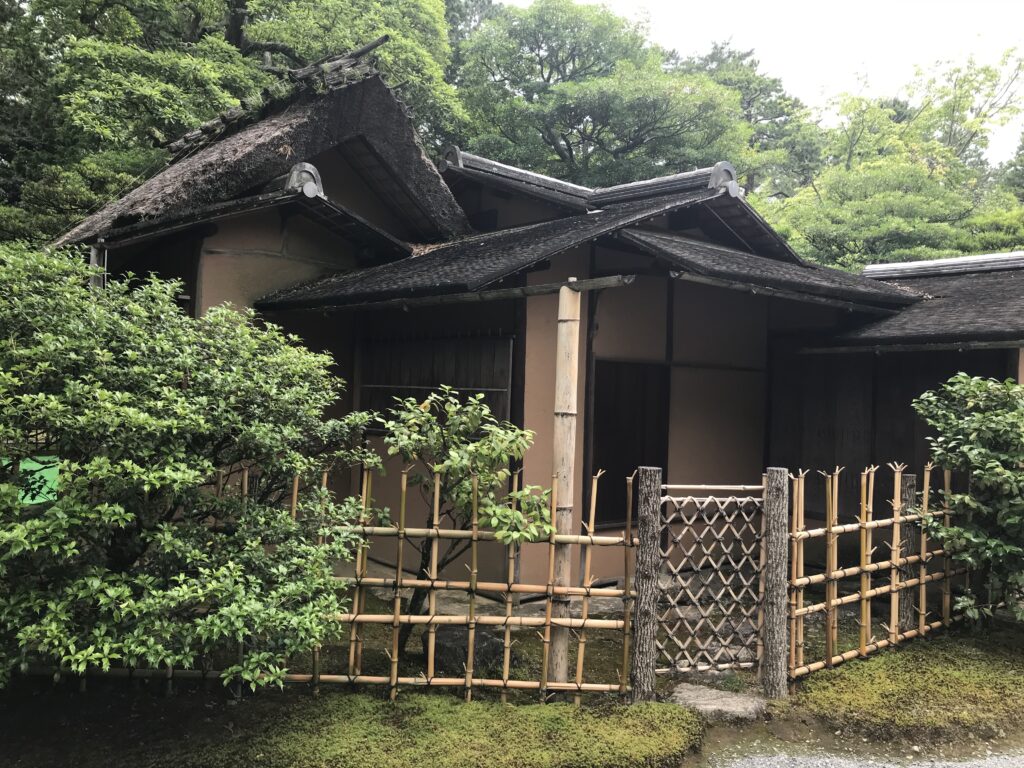
仙洞御所が紹介されている書籍
川瀬昇作さんの「桂離宮・修学院離宮・仙洞御所 庭守の技と心」に仙洞御所が詳述されています。
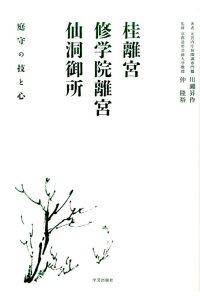
桂離宮・修学院離宮・仙洞御所 庭守の技と心 [ 川瀬 昇作 ]
価格:2,750円
(2021/6/1 14:49時点)
感想(0件)
Sento Gosho (Imperial Palace) (1) North Pond (English)
The Omiya Palace is still used by the Imperial Family for lodging.
The palace where the retired emperor resides is called Sento Gosho. This time, I visited the Sento Palace in the Kyoto Imperial Garden, which was completed in the early Edo period as the residence of Emperor Gomizuno. The palace is no longer there, and the adjacent Omiya Palace (the Empress Dowager’s palace) has been preserved to this day. Today, it is still used as a lodging for Their Majesties the Emperor and Empress, and Their Majesties the retired Emperor and retired Empress, when they come to Kyoto.
A world of green
As I entered the garden of the Sento Palace from Otsune Palace, the North Pond, surrounded by dense greenery, appeared before me. To describe this world, it is green, green, and green.It may have been due to the fact that I visited in early summer, but it felt strange to be in the middle of the city of Kyoto with nothing but green trees in sight. The tour guide led us in a clockwise direction.
After a short walk, I could see the reflection of the scenery on the other side of the pond. In the middle of the opposite shore was the Momiji Bridge, which would be decorated with red and vermilion leaves during the season of autumn leaves. Right now, the bridge is all green and covered with blue leaves.
Going across a unique bridge.
Along the way, I crossed many stone and earthen bridges. Each bridge was unique, and I would never get bored of the garden as it changed its appearance one after another in the midst of all the greenery. Before crossing the Momiji Bridge seen from the other side of the river, I passed through a thick forest of trees called Sagi-no-Mori (Egret’s Forest). There, the ground was also covered with dark green moss, and the world of green became even deeper.
Beside the North Pond stands the Youshintei, a tea house that was dedicated by the Konoe family at the beginning of the Meiji era. The design was a combination of thatched and shingled roofs. There was also an outside seating area outside the pavilion. I felt like taking a break here and drinking some tea. (To be continued)
Sento Gosho (Palais impérial) (1) Étang nord (Français)
Le palais d’Omiya est toujours utilisé par la famille impériale pour se loger.
Le palais où réside l’empereur retraité s’appelle Sento Gosho. Cette fois, j’ai visité le palais Sento dans le jardin impérial de Kyoto, qui a été achevé au début de la période Edo comme résidence de l’empereur Gomizuno. Le palais n’existe plus, et le palais Omiya adjacent (le palais de l’impératrice douairière) a été préservé jusqu’à ce jour. Aujourd’hui, il sert toujours de logement à Leurs Majestés l’Empereur et l’Impératrice, ainsi qu’à Leurs Majestés l’Empereur et l’Impératrice à la retraite, lorsqu’ils viennent à Kyoto.
Un monde de verdure
Lorsque j’ai pénétré dans le jardin du palais Sento depuis le palais Otsune, l’étang du Nord, entouré d’une verdure dense, est apparu devant moi. C’est peut-être dû au fait que j’ai visité le site au début de l’été, mais c’était étrange de se trouver au milieu de la ville de Kyoto et de ne voir que des arbres verts. Le guide touristique nous a conduits dans le sens des aiguilles d’une montre.
Après une courte marche, j’ai pu voir le reflet du paysage de l’autre côté de l’étang. Au milieu de la rive opposée se trouvait le pont Momiji, qui serait décoré de feuilles rouges et vermillon pendant la saison des feuilles d’automne. En ce moment, le pont est tout vert et couvert de feuilles bleues.
On traverse un pont unique.
En chemin, j’ai traversé de nombreux ponts en pierre et en terre. Chaque pont était unique, et je ne me lassais jamais de ce jardin qui changeait d’aspect l’un après l’autre au milieu de toute cette verdure. Avant de traverser le pont Momiji, vu de l’autre côté de la rivière, j’ai traversé une épaisse forêt d’arbres appelée Sagi-no-Mori (forêt des aigrettes). Là, le sol était également recouvert de mousse vert foncé, et le monde de verdure devenait encore plus profond.
À côté de l’étang nord se trouve le Youshintei, une maison de thé qui a été consacrée par la famille Konoe au début de l’ère Meiji. Le design était une combinaison de toits de chaume et de bardeaux. Il y avait également un coin salon à l’extérieur du pavillon. J’ai eu envie de faire une pause ici et de boire du thé. (A suivre)
